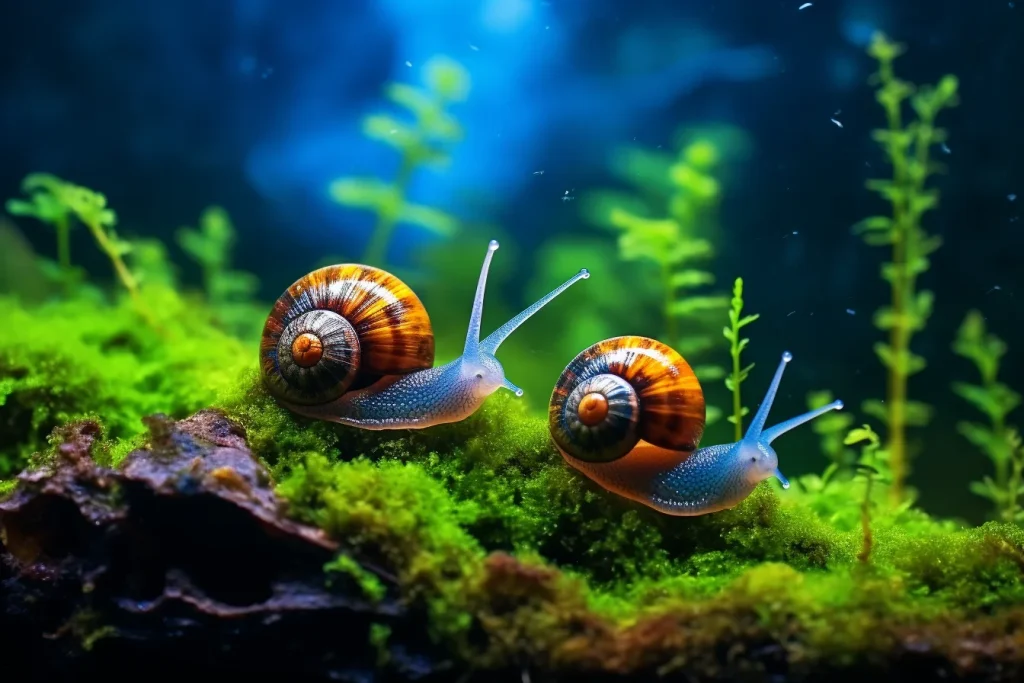Maintaining a leak-proof aquarium is crucial for the health and safety of your beloved aquatic pets. Even the smallest leak can wreak havoc, leading to water loss, potential electrical hazards, and an unstable environment that puts your fish at risk. That’s why choosing the right silicone sealant is an essential step in creating and maintaining a secure underwater habitat.
In this ultimate guide, we’ll dive deep into the world of aquarium silicone sealants, exploring the top 10 products that will keep your fishies safe and sound. From non-toxicity to curing time and flexibility, we’ll cover all the essential criteria to help you make an informed decision.
Understanding Aquarium Silicone Sealants
Aquarium silicone sealants are specialized adhesives designed for use in underwater environments. They play a crucial role in repairing leaks, constructing new tanks, and creating underwater structures like caves and rockwork. These sealants form a watertight bond that is resistant to moisture, temperature fluctuations, and the unique conditions found in aquatic habitats.
However, not all silicone sealants are created equal. While some are safe for fish and aquatic life, others may contain toxic chemicals or release harmful compounds during the curing process. That’s why it’s essential to choose a sealant specifically formulated for aquarium use, ensuring the safety and well-being of your underwater friends.
Criteria for Choosing the Right Silicone Sealant
When selecting a silicone sealant for your aquarium, there are several important factors to consider:
Non-Toxicity
The most crucial factor is non-toxicity. Aquatic life is extremely sensitive to chemicals and pollutants, and even trace amounts of harmful substances can have devastating effects. A safe silicone sealant should be free from toxic ingredients and should not leach any harmful compounds into the water, even after curing.
Curing Time
Curing time refers to the amount of time it takes for the sealant to dry and fully set. A longer curing time allows the sealant to form a stronger, more durable bond. However, it’s essential to follow the manufacturer’s instructions and allow the sealant to cure completely before introducing fish or water to the aquarium.
UV Resistance
If your aquarium is exposed to sunlight or UV lighting, choosing a UV-resistant silicone sealant is crucial. These sealants are formulated to withstand the damaging effects of UV radiation, ensuring longevity and preventing premature degradation.
Flexibility
Temperature fluctuations and water pressure can cause aquarium seals to expand and contract. A flexible silicone sealant can accommodate these movements without cracking or losing its bond, minimizing the risk of leaks and ensuring a long-lasting seal.
Top 10 Aquarium Silicone Sealants
Now that we’ve covered the essential criteria, let’s dive into the top 10 aquarium silicone sealants that will keep your fishies safe and sound:
- Aqueon Aquarium Silicone Sealant – This long-lasting, non-toxic sealant is suitable for both freshwater and saltwater tanks. It provides excellent adhesion to glass, acrylic, and other surfaces, and is resistant to mold and mildew.
- SELSIL Aquarium Silicone Clear Sealant – With its crystal-clear appearance, this safe and versatile sealant is perfect for creating stunning underwater landscapes. It’s non-toxic, flexible, and easy to apply.
- ASI Clear Aquarium Silicone Sealant – Reliable and easy to work with, this sealant is specifically designed for aquarium use. It forms a strong, watertight bond and is safe for both freshwater and saltwater environments.
- Aquascape Black Silicone Sealant – Ideal for creating black backgrounds and rockwork, this sealant is safe for both freshwater and saltwater aquariums. It’s flexible, mold-resistant, and provides a strong, long-lasting bond.
- AG Aquarium Silicone Sealant – Designed specifically for glass-to-glass connections, this sealant offers superior bonding strength and flexibility. It’s non-toxic, waterproof, and suitable for both freshwater and saltwater tanks.
- Kraken Bond 100% Silicone Aquarium Safe Sealant – This premium quality sealant is designed to withstand the demands of aquatic environments. It’s non-toxic, flexible, and provides a durable, watertight seal.
- ASI Black Aquarium Silicone Sealant – Excellent for dark-colored tanks, this black sealant is safe for both freshwater and saltwater aquariums. It’s flexible, mold-resistant, and forms a strong, watertight bond.
- Apel Aquarium 100% Silicone Sealant – Safe and effective, this sealant is designed specifically for aquarium use. It’s non-toxic, flexible, and provides excellent adhesion to glass and other surfaces.
- Akfix 100AQ Aquarium Safe Silicone Sealant – Solvent-free and durable, this sealant is perfect for creating a watertight seal in your aquarium. It’s non-toxic, flexible, and resistant to mold and mildew.
- GE Silicone II Clear Waterproof Sealant – Although not specifically marketed for aquariums, this sealant is widely used by aquarists for its non-toxic and waterproof properties. It provides excellent adhesion to glass and is safe for fish once fully cured.
Pros and Cons of Each Sealant
While all of these silicone sealants are suitable for aquarium use, each one has its own unique strengths and limitations. Here’s a quick overview of the pros and cons of each product:
Aqueon Aquarium Silicone Sealant
- Pros: Long-lasting, mold and mildew resistant, suitable for freshwater and saltwater tanks
- Cons: May have a slight odor during curing
SELSIL Aquarium Silicone Clear Sealant
- Pros: Crystal clear appearance, safe, versatile, easy to apply
- Cons: Longer curing time
ASI Clear Aquarium Silicone Sealant
- Pros: Reliable, easy to work with, strong bond
- Cons: May have a slight odor during curing
Aquascape Black Silicone Sealant
- Pros: Ideal for black backgrounds and rockwork, flexible, mold-resistant
- Cons: May discolor over time
AG Aquarium Silicone Sealant
- Pros: Superior bonding strength, flexible, suitable for glass-to-glass connections
- Cons: May have a slight odor during curing
Kraken Bond 100% Silicone Aquarium Safe Sealant
- Pros: Premium quality, flexible, durable
- Cons: More expensive than some other options
ASI Black Aquarium Silicone Sealant
- Pros: Excellent for dark-colored tanks, flexible, mold-resistant
- Cons: May discolor over time
Apel Aquarium 100% Silicone Sealant
- Pros: Safe, effective, good adhesion to glass
- Cons: Curing time may vary depending on conditions
Akfix 100AQ Aquarium Safe Silicone Sealant
- Pros: Solvent-free, durable, resistant to mold and mildew
- Cons: Limited availability in some regions
GE Silicone II Clear Waterproof Sealant
- Pros: Non-toxic, waterproof, excellent adhesion to glass
- Cons: Not specifically marketed for aquarium use, longer curing time
Remember, it’s essential to follow the manufacturer’s instructions carefully and allow for proper curing time to ensure the sealant is safe and effective in your aquarium environment.
Application Tips and Techniques
Applying silicone sealant correctly is crucial for achieving a strong, watertight bond and ensuring the safety of your aquatic life. Here are some step-by-step instructions to help you get it right:
Surface Preparation
- Clean the surfaces you’ll be sealing thoroughly, removing any dirt, grease, or debris. A clean surface ensures proper adhesion and prevents contamination.
- Use a degreaser or isopropyl alcohol to remove any residue or oils that may interfere with the sealant’s bonding ability.
- Ensure the surfaces are completely dry before applying the sealant.
Proper Sealing Techniques
- Cut the nozzle of the sealant tube at a 45-degree angle to create a smooth, even bead.
- Apply the sealant in a continuous, unbroken line, ensuring good contact with both surfaces.
- Use a silicone sealant tool or your finger (with a small amount of dish soap or water) to smooth and shape the bead, ensuring a tight, even seal.
- Remove any excess sealant immediately with a damp cloth or paper towel.
Curing Time Management
- Follow the manufacturer’s recommended curing time carefully. This typically ranges from 24 to 72 hours, depending on the product and environmental conditions.
- Avoid introducing water or fish to the sealed area until the sealant has fully cured.
- Ensure proper ventilation during the curing process to allow any fumes or odors to dissipate.
- Once cured, the sealant should be completely safe for aquatic life.
FAQs About Aquarium Silicone Sealants
Q: Can I use regular silicone sealant for aquariums? A: No, regular silicone sealants are not designed for aquarium use and may contain toxic ingredients that can harm your fish and other aquatic life. Always choose sealants specifically designed and labeled as safe for aquarium use.
Q: How often should I reseal my tank? A: The frequency of resealing will depend on the condition of the existing sealant and any leaks or cracks that may develop over time. It’s a good practice to inspect your tank regularly and reseal any areas that show signs of wear or degradation.
Q: What if I accidentally spill sealant into the water? A: If you accidentally spill sealant into the aquarium water, remove your fish immediately and perform a complete water change. The spilled sealant could be toxic and potentially harm your aquatic life.
Q: Can I use silicone sealant on acrylic tanks? A: Yes, most aquarium-safe silicone sealants are compatible with both glass and acrylic tanks. However, it’s always a good idea to check the manufacturer’s instructions and recommendations for your specific tank material.
Q: How long will the sealant last? A: The lifespan of silicone sealant can vary depending on the product, environmental conditions, and maintenance. With proper application and care, most aquarium silicone sealants can last several years before needing replacement.
Final Thoughts
Maintaining a leak-proof aquarium is essential for the health and well-being of your aquatic pets. By choosing the right silicone sealant and following proper application techniques, you can create a safe, secure underwater habitat that will keep your fishies happy and thriving for years to come.
Remember, when it comes to aquarium sealants, safety should always be the top priority. Take the time to research and choose a product specifically designed for aquarium use, and follow all safety protocols to ensure a successful and worry-free aquarium experience.
With this ultimate guide, you now have the knowledge and tools to make an informed decision and select the perfect silicone sealant for your aquarium needs. Your fishies will thank you for creating a safe and secure environment that allows them to swim, explore, and thrive in their underwater paradise.
Are you ready to take the first step towards a leak-proof aquarium? Explore our selection of top-rated aquarium silicone sealants and create a safe, secure home for your aquatic friends today! Don’t forget to subscribe to our newsletter for more expert tips and advice on aquarium care and maintenance.


